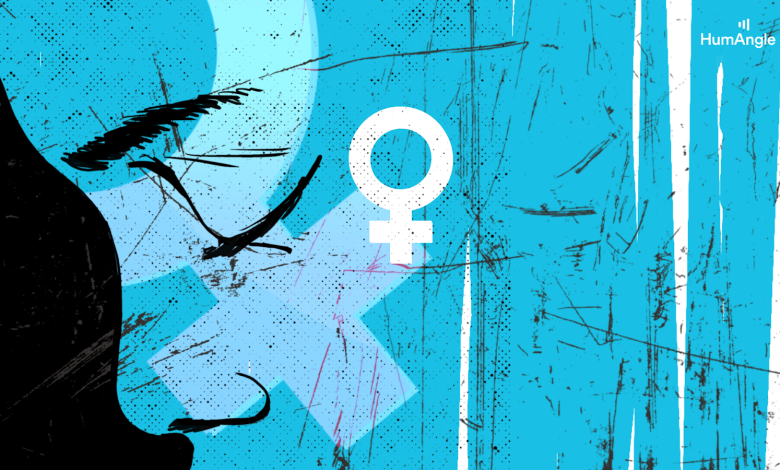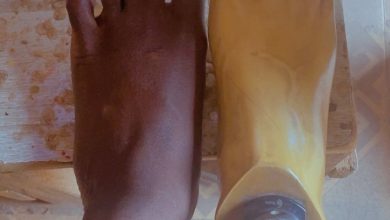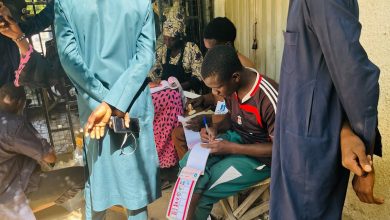Beyond The Masks (II): The Struggles of Nigerian Women Living with Mental Health Conditions
Nigerian women living with Obsessive-Compulsive Disorder, Borderline Personality Disorder, and Depression face multiple layers of isolation and stigma. Limited access to appropriate healthcare, coupled with deep-rooted societal misconceptions, impacts their sense of identity, belonging, and interpersonal relationships.

One of the hardest parts of living with Borderline Personality Disorder (BPD) for Emily Audu* is becoming emotionally tethered to a ‘favourite person’. Her world revolves around that one person; their words, presence, and approval. The fixation becomes a distraction from the internal chaos she faces daily. Even the smallest disappointment can unravel her, triggering a downward spiral that takes months to escape.
BPD is a mental health condition marked by intense, unstable relationship patterns, impulsiveness, and unhealthy self-perception, which affects the quality of their lives and relationships. People with BPD often experience emotional splits; intense shifts in their emotions and perceptions, leading to mood swings, swinging between idealising people and devaluing them, struggling with ambiguity, and impulsive behaviour.
These emotional extremes can make maintaining a more balanced perspective and relationships hard, leading to significant internal distress.
For Emily, some of the symptoms manifest as panic attacks, imagined scenarios she begins to believe and live out, and severe difficulty regulating her emotions. Her emotional pain is so intense, it sometimes feels physical, occasionally leading to short-term paralysis—a state where anxiety and anguish can leave her unable to move.
“It is a painful condition,” she said.
“It’s often misunderstood and confused with bipolar disorder, but they are not the same. With BPD, there’s usually no middle ground; my day is either amazing or horrible. My emotions are heightened to extremes,” Emily told HumAngle. “Sometimes, to cope, I jokingly refer to myself as a vampire. Living with BPD is unpredictable. I can go from being really happy to having a panic attack and feeling intense emotional pain within minutes. Anything can trigger me.”
Even before the 21-year-old based in Abuja, North-central Nigeria, was diagnosed with the condition, she always sensed she was different. There was a clear distinction between how her brain worked and how others processed things.
She struggles to handle emotions or situations like others around her. People often accuse her of overreacting and jumping to conclusions, and she is swift to believe someone hates her, leading to feelings of betrayal and defensiveness. She is also prone to pushing people away while simultaneously craving their closeness.
In relationships, she often self-sabotages. When things fall apart, she blames others, even when she knows she contributed to the breakdown.
“Right now, I am at a point where I feel like giving up on relationships. It’s hard for people to be with me because I recognise that I chase them away,” she lamented. “[The condition] makes it hard for me to live like others. Sometimes, I wish I knew what it felt like to be ‘normal.’ I wear a mask just to get through the day. I would wear makeup to feel like I was hiding from the world.”
The impact on her education has been massive. She struggled for an entire year in university. Even though she was attending classes, she was absent mentally, feeling trapped in her head. Some days, she couldn’t leave her bed, even when she struggled with sleep.
“I remember going weeks without sleep, not even a nap. It was during my final year that I managed to pull myself together. I realised how much I had missed, and I was grateful I could catch up and hit my target. But it was a rough, bumpy road,” she recalled.
Her secondary school years were clouded by depression and anger. She had a lot happening then and didn’t have the time or space to process them. She was wrapped in a bubble of defensiveness and depression, leading to intense and uncontrollable emotional splits.
A long-awaited diagnosis
For years, Emily didn’t know what was wrong. It wasn’t until a seizure-like panic attack in 2023 that she was finally diagnosed. The episode, later identified as a Psychogenic Non-Epileptic Seizure (PNES), lasted several minutes and left those around her frightened and confused.
“That was a wake-up call for me. After that experience, I knew I needed help,” she said.
She began taking various medications, including antidepressants and anti-anxiety drugs, but continued to struggle. Her parents failed to understand the depth of her suffering. Often called “lazy”, her reactions were mislabelled as disrespectful.
“My mum tried to be supportive, but not in the way I needed. I never said anything because I knew she was trying her best,” Emily recounted.
As the eldest child, she felt the need to conceal her struggles. She also experienced abuse at different points in her life, which may be a factor that contributed to her condition. Her family dynamic, she believes, has played a role. Her relationship with her father remains strained. While she shares a stronger bond with her mother, the older woman still doesn’t understand why professional help is necessary for her daughter’s condition. Emily’s mother believes prayer alone should suffice.
Emily, a person of faith, believes in the power of prayer but also knows that her condition cannot be prayed away.
A study by Covenant University, a leading Nigerian private institution, links adverse childhood experiences, including dysfunctional family dynamics, abuse, and neglect, to BPD amongst young people in the country.
‘I still feel alone’
Emily says another difficult part of living with BPD is how others perceive her. People may see her as “evil” or “toxic” when she struggles with emotional regulation, making her feel like she’s too much to handle. Despite this, she has close friends who understand and support her.
She has paused her medication due to side effects, such as hormonal imbalances and emotional numbness. Though she was meant to revisit her prescription, she never followed through. Therapy, too, is currently on hold. It no longer feels helpful.

“It’s like I have given up on myself,” she said. “My best friend is trying to get me back on track, but when you have tried so many times, you just want to stop trying. From 2020 to 2025, I have attempted suicide seven different times.”
Studies show that women are 50 to 75 per cent more likely to experience adverse side effects from medications, largely due to the historical underrepresentation of women in clinical trials and biomedical research.
Still, receiving a diagnosis has been life-changing for Emily.
For a long time, she just wanted to understand what was going on with her instead of feeling like an ‘insane’ person, like she had most of her life. It made her know that even though she had a mental illness, she wasn’t alone in her pain, and that brought her a lot of comfort.
“I started learning about it and connecting with creators who also had it online. It felt like I had finally found where I belonged, because for the longest time, I didn’t fit in anywhere. I felt alone. I still feel alone sometimes, but now, with a name for what I am experiencing and the knowledge that there are others like me,” Emily told HumAngle.
Today, Emily is channelling her energy into things she loves, painting, writing, and exercise. She still hopes to find the strength to give therapy and medication another chance, and to believe, truly, that she can heal.
Living with comorbidity
For Erica Michael*, alongside BPD, she has been diagnosed with obsessive-compulsive disorder (OCD), avoidant personality disorder, and severe depression—a case of comorbidity, where multiple chronic conditions coexist and often complicate each other.
“One of the most noticeable symptoms I experience is intense restlessness,” she said. “On some days, I wake up feeling like my brain can’t stay still. I become extremely fidgety and unable to focus or sit calmly, even in places like church, where I usually seek peace. It’s like my mind is constantly racing, and I feel the need to twitch or move.”
In those moments, Erica realised that physical pain brings a strange sense of calm, and she would seek out pain just to quiet the chaos inside her.
Her depression began after experiencing abuse when she was much younger.
“Survivors of violence have a great risk of experiencing PTSD, substance abuse, depression, anxiety and other mental health issues,” said Chioma Onyemaobi, a clinical psychologist at HumAngle Foundation.
Over time, she sank deeper into it, thinking about everything that had happened and feeling overwhelmed.
Then came the OCD. She couldn’t leave the house without checking multiple times to see if her mother’s shop was locked or if the gas was turned off. Exhausted by the repetition, she started writing down in a book that she had turned off her gas, closed her windows, and put out her lights to focus on work.
“When I eventually went to the clinic, I had to undergo some assessments. That was when everything started making sense. I’ve always hesitated to label things I don’t understand, but finally, getting a name for what I was experiencing helped me begin to process it all,” Erica told HumAngle.
A series of challenges
Before Erica’s BPD diagnosis, there was Avoidant Personality Disorder. She underwent psychological treatment in Lagos State, southwestern Nigeria, where she is based, during which some symptoms began to align more closely with Bipolar Disorder and OCD. She was treated for these conditions with antidepressants and other medications.
However, as the treatment progressed, more symptoms surfaced—ones that pointed towards BPD.
“I began seeking help in April 2023. That was when I had a moment of clarity and realised I needed to start taking care of my mental health,” she recounted. “I began therapy then, and while I am not fully where I want to be yet, I can say I am doing better than I was before.”

Experiencing abuse at a young age made her feel like there was always something wrong with her. She became very introverted, always deep in thought, but never speaking up. Her mind was constantly filled with thoughts as a teenager, but she kept everything inside.
This silence affected the 29-year-old deeply. “I didn’t speak up when I should have, and that carried on into adulthood. One significant moment that really affected me was when I had a panic attack and slumped in front of eight important people. That experience reminded me of how much I hold in, and how it still affects me,” she said.
This silence slowed her down a lot in her career. She would attend bootcamps and workshops, and even when she knew the answers or had something valuable to say, she kept quiet. She was afraid of judgment, and being wrong, she also struggled with impostor syndrome, making her doubt her worth, even when she had proven skills.
Chioma said that social stigma often prevents survivors from speaking out, especially when they are going through psychological issues and trauma.
As someone with an invisible disability, she gets easily prone to overstimulation and panic attacks due to a lack of proper accommodations, which made her passionate about inclusion and understanding the lack of it in the society she lives in.
Later on, she was told she had pseudo-dementia, which helped explain some of the memory issues she was dealing with.
“It’s not the same as actual dementia; it’s more like memory loss or cognitive problems that come from severe depression. For me, it wasn’t just normal forgetfulness. It felt like my mind would just go blank, and even when I tried to remember things, they wouldn’t come. It added another layer to everything I was already feeling, such as confusion, frustration, and the fear that I was losing parts of myself,” she explained.
Erica struggles with forgetfulness, which sometimes affects her performance at work. It often feels like she can’t think clearly, and while her body craves rest, sometimes for days, she simply can’t afford that luxury. Expressing herself, particularly in writing, remains a challenge. However, she has found a helpful workaround through AI tools, which assist her in navigating these difficulties and organising her thoughts more effectively.
Amidst these challenging experiences, Erica said it opened her eyes to a different view on life. She has met people who inspired her, and has discovered that she can also help others. Her career has also begun to grow after many years of struggle, and while it’s been tough, she has learned much from it.
“It has made me more empathetic towards myself and others who may also be struggling in their own ways,” she said. “I’ve learned the importance of understanding, and I hope to keep using that empathy to help others.”.
The reality of OCD
Erica is not alone. For Angela Emmanuel*, life is shaped by an obsession with counting, symmetry, and structure. Everything, from volume levels to the number of tiles on the floor or letters in a word, has to be even or aligned.
“I don’t realise when it’s happening most times, but I catch myself in moments of boredom or distraction,” she explained. Most of her symptoms lead to obsessions and mental compulsion, though she experiences physical compulsions occasionally.
Compulsions in OCD are repetitive movements or behaviours done to relieve stress, often disrupting daily life. Obsessive symptoms, on the other hand, are unwanted and intrusive thoughts that lead to intense anxiety. Sometimes, compulsions develop as a coping mechanism to reduce the impact of these obsessions.
A major part of OCD is intrusive thoughts. While the term has become common in pop psychology, especially on social media, often misused to describe fleeting, impulsive ideas, true intrusive thoughts are far more intense and distressing. They are recurring, involuntary, and often involve disturbing images or ideas that can cause shame or fear.
For this 28-year-old, these persistent thoughts about terrible events, imagining her family dying, swerving her car off the road, or harming herself. These thoughts spiral into guilt and self-questioning.
The first time she realised something was wrong was in primary school.
“I don’t remember my age, but I remember exactly where I was. I had come home from school, and there was an American show on TV, probably a documentary or a health segment on a talk show. They began to talk about this condition and how it manifests, and I could not believe my ears because it matched exactly with what I had been experiencing for years, especially when they talked about pointless compulsive counting and the need to have equal feelings or sensations on different sides of the body. They had a reenactment of something I had just done that afternoon,” she recounted.
Angela recalls a water filter tap at home. If water accidentally splashed on one hand, she would intentionally splash the other to ‘balance’ the sensation.
It wasn’t until 2020 that she received a proper diagnosis.
“I have other mental health issues that had been ignored and had piled up since childhood, and it got to a point where I could not ignore them anymore,” said Angela, who works as a research assistant and operations lead.
Her treatment involved medication and psychotherapy. Her first prescription addressed OCD, anxiety, insomnia, and panic disorder, but side effects forced her to stop. Fortunately, a new treatment plan provided relief.
“For that short while, I felt the positive effects and a vast improvement,” she told HumAngle. “Eventually, I would get back on a different set of medication, which I believe really helped to balance out the chemical state of my brain.”
Angela praises the attentiveness of her doctor, who took time to understand her experience and involved her in the treatment process.
However, when she visited a different hospital in Kaduna State, northwestern Nigeria, her suspected Attention Deficit Hyperactivity Disorder (ADHD) was dismissed, due to the misconception that it primarily affects young boys. ADHD symptoms in women often differ, leading to underdiagnosis. She eventually returned to her previous doctor and received an ADHD diagnosis in 2022.
Chioma explained that apart from underdiagnosis, many women face barriers in accessing mental healthcare due to permission requirements, dependence on male family members, or fear of judgment.
‘It shouldn’t be trivialised’
“OCD affects me mentally because it leads to a general state of unease and unrest,” Angela lamented. “It consumes my time and interferes with my daily life. It is exhausting to be in thought spirals. My brain latches onto a thought and won’t let it go, especially things that most people aren’t tormented or bothered by.”
At its worst, the condition leads her to chase symmetry to painful extremes; if she accidentally burned one hand, she would burn the other to feel ‘balanced’. Treatment has helped reduce this compulsion, though it still resurfaces occasionally.
“My wish is to be completely cured,” she said. “I’m managing the OCD fairly well, but ADHD is another story. I haven’t undergone serious treatment or taken medication for it, and it currently affects my life even more.”
Angela is concerned about how OCD is often trivialised in popular culture, frequently reduced to a quirky obsession with cleanliness. In reality, her experience is far more complex; her physical environment may appear ‘messy’, but everything is meticulously organised in her mind.
“The trivialising of OCD doesn’t help with creating awareness and understanding in the general public,” she told HumAngle. “The misconceptions downplay the seriousness of the disorder, and the experience of people with OCD is then invalidated by others due to this.” She urges greater public awareness and curiosity about mental health conditions, so people can learn how to support better those affected.
Angela welcomes the growing awareness of mental health in Nigeria, a shift from the silence of her youth. But she believes much work remains.
“There are still jokes and derogatory comments, even from those who should know better. Thankfully, it’s happening far less than before,” she said.
*The asterisked names are pseudonyms we have used at the request of the sources to protect them from stigma.
This is the last part of the ‘Beyond The Masks’ series. Read the first part here.
The article discusses the struggles of individuals living with Borderline Personality Disorder (BPD) and Obsessive-Compulsive Disorder (OCD), highlighting two cases from Nigeria.
Emily Audu experiences severe emotional distress and unstable relationships due to BPD, and the article emphasizes the challenges of receiving a proper diagnosis and the misunderstanding surrounding her condition.
Erica Michael, diagnosed with comorbid conditions, including BPD and OCD, shares her journey of seeking mental health treatment, facing symptoms like restlessness and forgetfulness, and the impact of childhood abuse on her mental health. Both stories underscore the importance of accurate diagnoses, medication, and public awareness to improve understanding and support for those affected by these conditions.
Support Our Journalism
There are millions of ordinary people affected by conflict in Africa whose stories are missing in the mainstream media. HumAngle is determined to tell those challenging and under-reported stories, hoping that the people impacted by these conflicts will find the safety and security they deserve.
To ensure that we continue to provide public service coverage, we have a small favour to ask you. We want you to be part of our journalistic endeavour by contributing a token to us.
Your donation will further promote a robust, free, and independent media.
Donate HereStay Closer To The Stories That Matter




